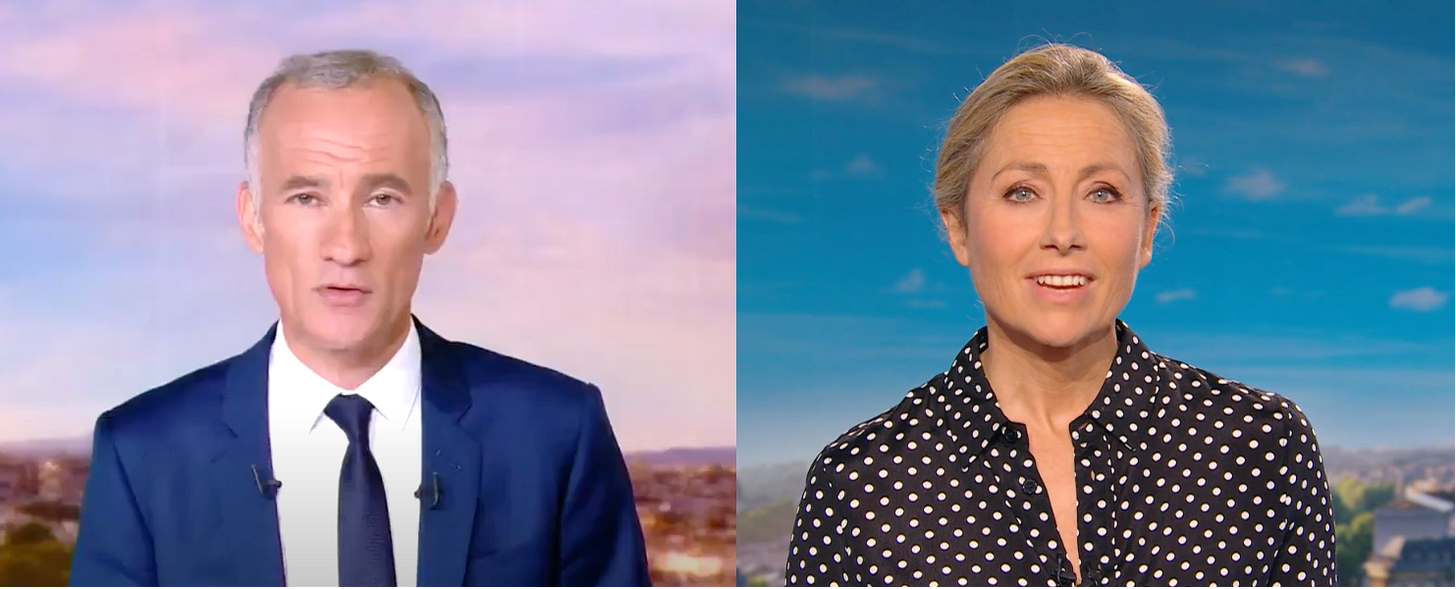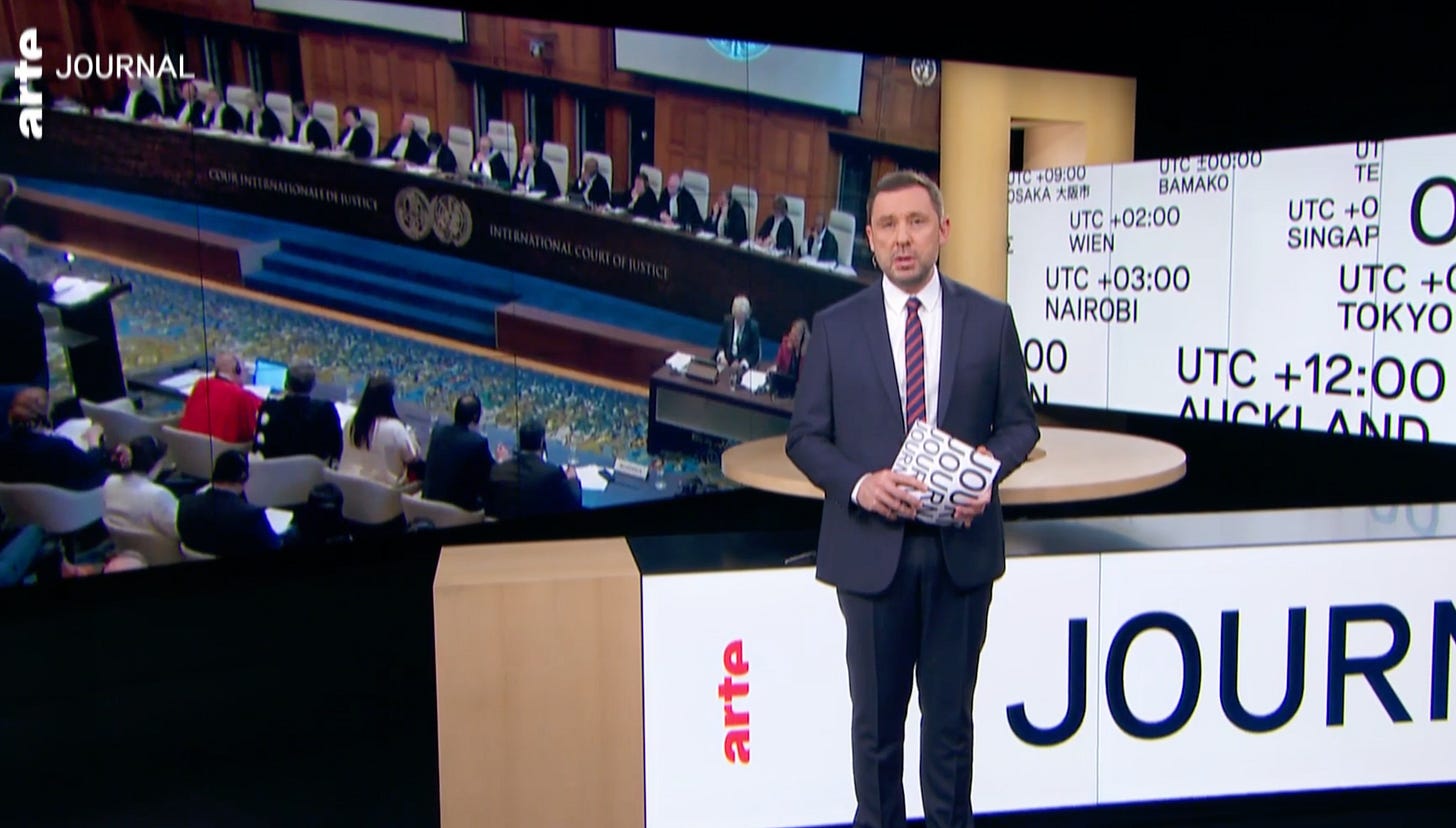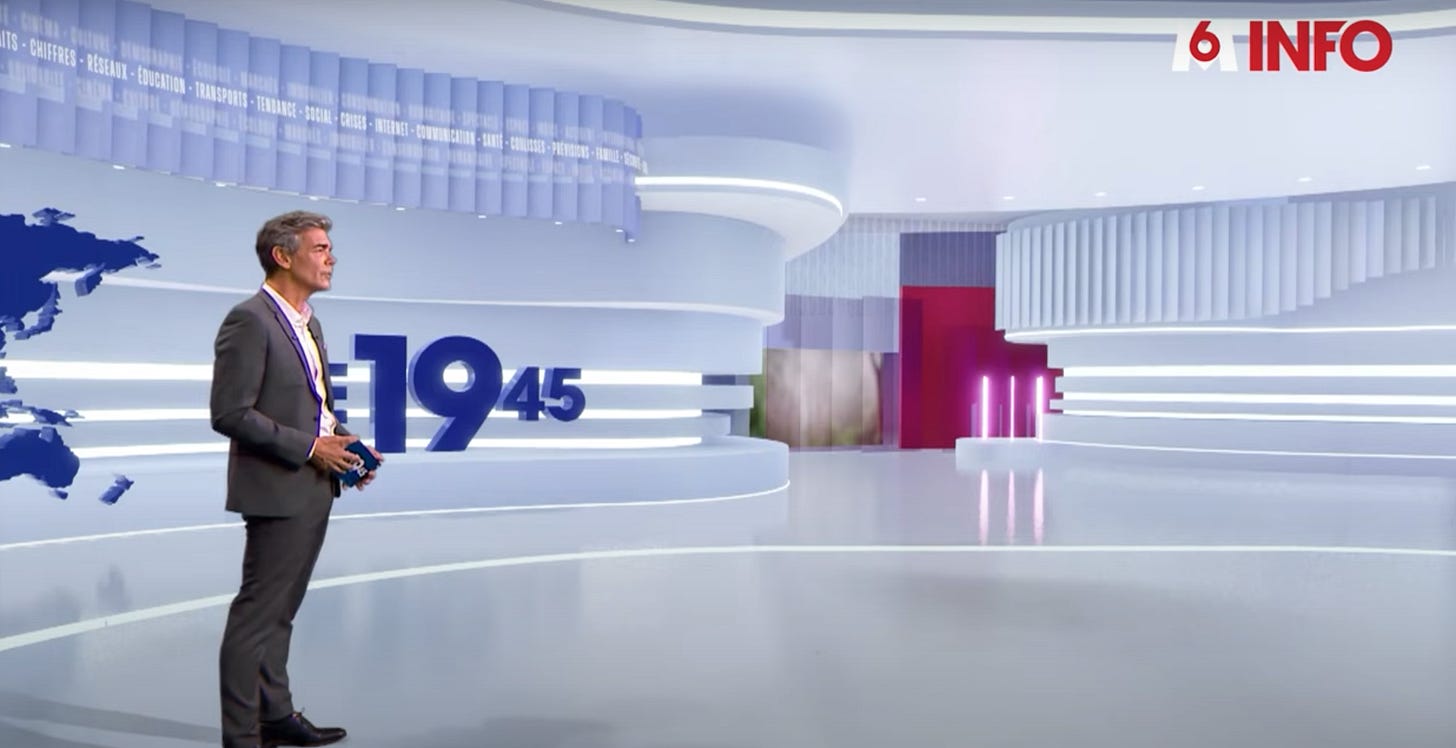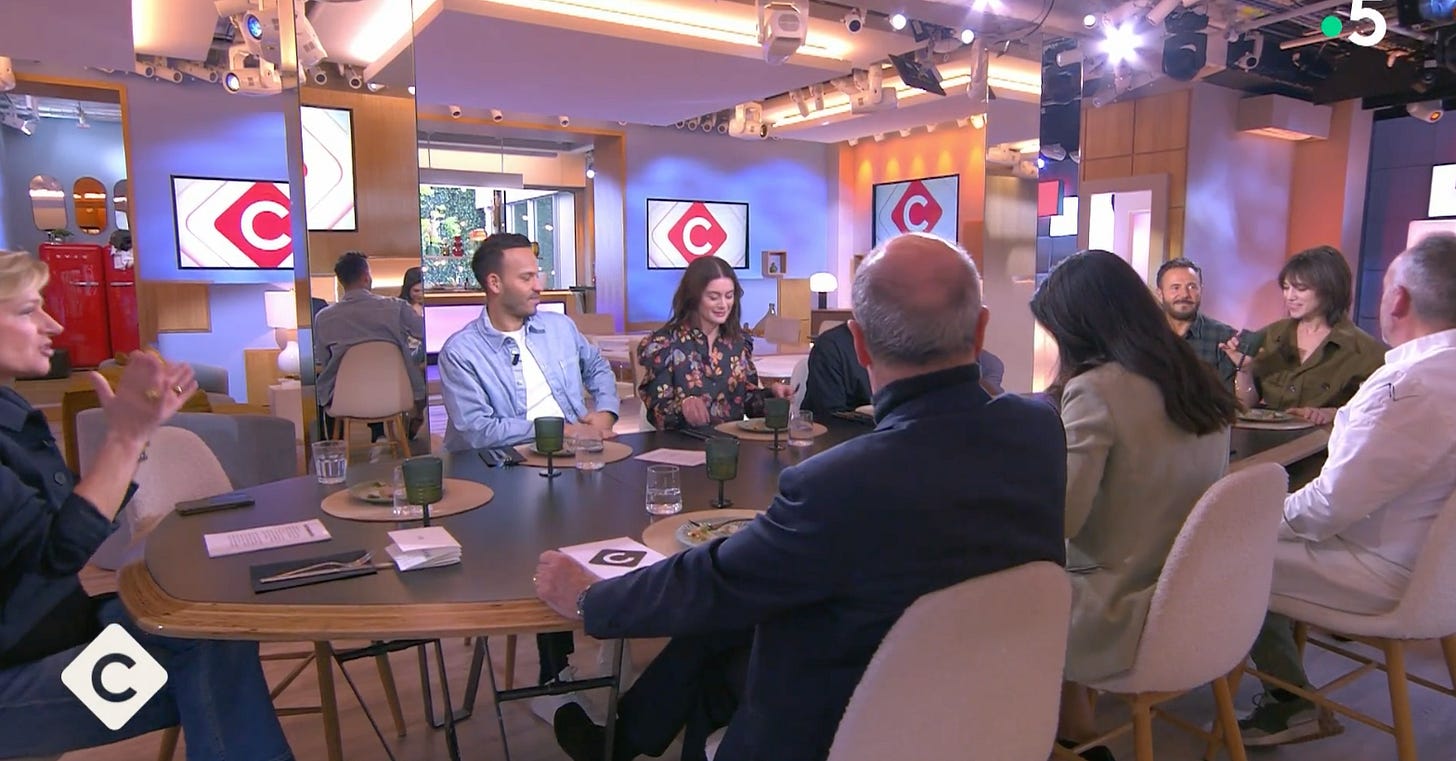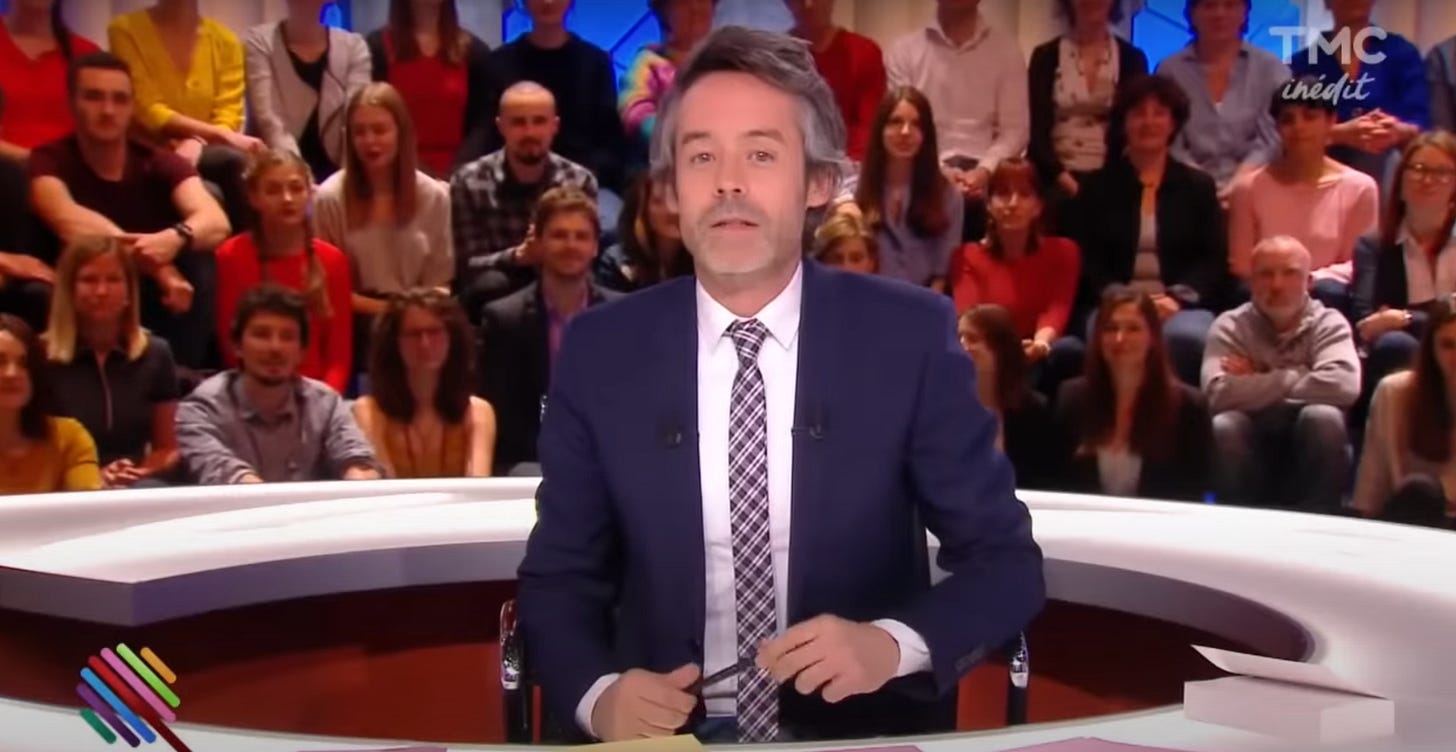The French talent for news programmes
There's something for everyone in the French news landscape

One of the notable things about French television is the sheer volume of news and discussion programmes.
Between 7pm and 9pm on any weekday evening, French TV viewers have a choice of at least eight different programmes offering updates on news and current affairs.
What great about this selection is the diversity of formats, content and style. Want international news with an intellectual flavour? No problem. Prefer longer-form interviews with politicians and newsmakers? Absolutely. In the mood for a raucous debate? Step this way.
Here’s a brief summary of what’s on offer.
The traditionalists
Every evening at 8pm, the two main TV channels broadcast news bulletins that would look familiar to viewers from most countries. The format is predictable. A solemn-looking presenter reads out headlines before introducing a series of reports. On privately-owned channel TF1 the job is done by silver fox Giles Bouleau. On public broadcaster France 2 proceedings are led by the enigmatic Anne-Sophie Lapix. TF1 tends to lean more into crime and society issues than its public service counterpart, but overall their news content is broadly similar. It’s all slickly done with perhaps an over-emphasis on domestic news at the expense of international at times. These bulletins also often run long features on tantalising places to visit in France and around the world, which can sometimes feel as if you’ve accidentally flicked channels to a travel programme.
Local flavour
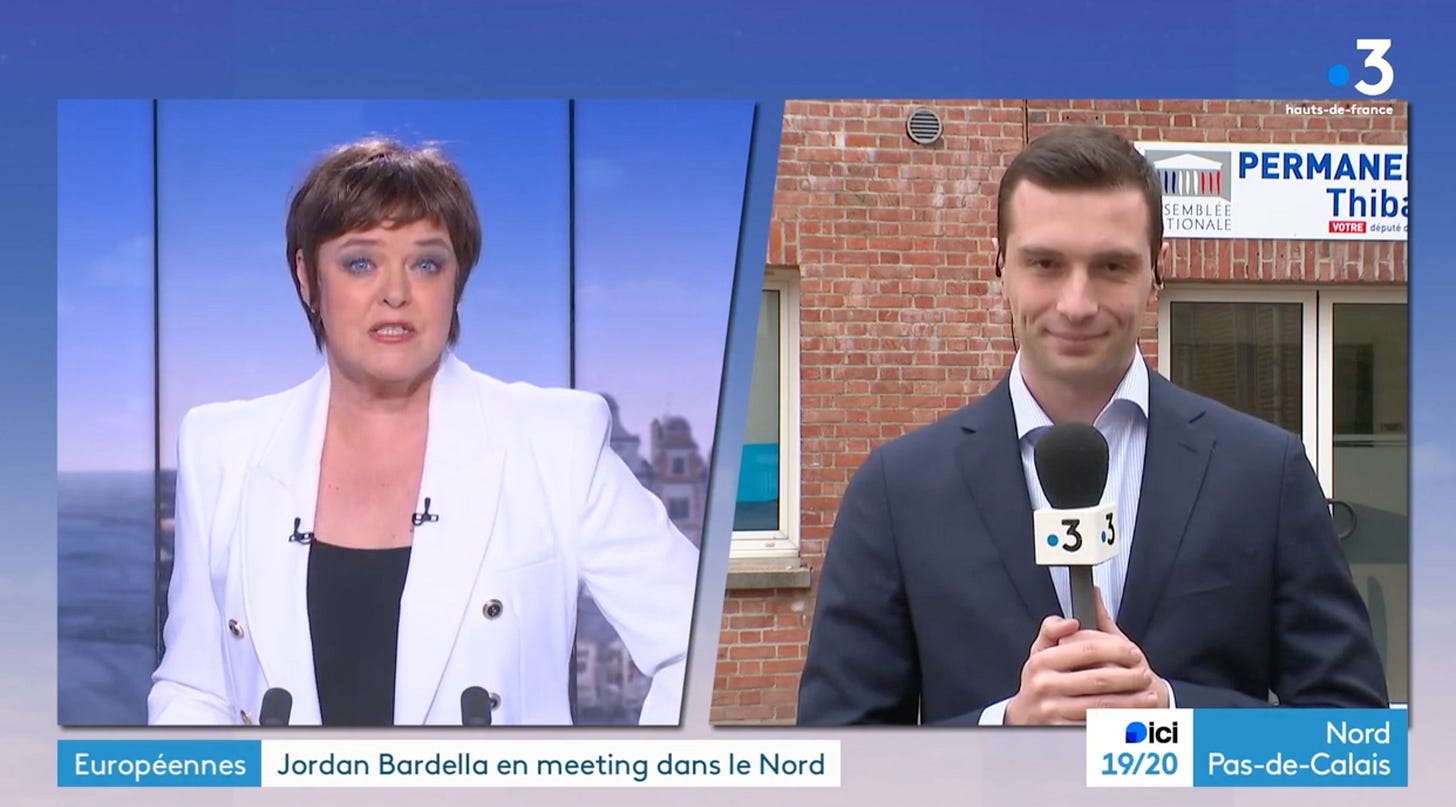
If you’re more interested in finding out what’s going on in your part of France, then the bulletin on France 3 will be more up your boulevard. France 3 is a public channel with the remit of representing the regions around the country. At 7pm viewers can watch one of 24 bulletins tailored to different regions from the Nord-Pas de Calais in the north down to the Côte d’Azur and even beyond to Corsica. There’s a similar set of lunchtime bulletins too. It’s a well-produced programme and often features live interviews with politicians and newsmakers.
High brow
If your tastes are more intellectual, then you need to get yourself over to Franco-German channel Arte. As you might expect from the name, Arte broadcasts a high-end range of films, documentaries, series and culture. Its daily news programme Journal is at 7.45pm and focuses on a more international news agenda. The same bulletin is broadcast in both French and German so you can pick your preferred language. The format dispenses with the usual stress-inducing news music, adopting a calmer and more thoughtful tone. That’s then followed by another programme, 28 minutes, which goes deeper into the news with a panel of intellectual and cultural types to discuss what’s happening. Definitely the more sophisticated choice for the discerning news consumer.
Big and bold
If the calm, considered and thoughtful approach of Arte is not your thing, then hop over to M6. As with Arte, its main news bulletin airs at 7.45pm but the two are poles apart. The M6 news, called Le 19.45, kicks off with loud, urgent music. A lone presenter stands in an enormous studio in front of a huge screen. You can feel your blood pressure rising within seconds. Where Arte is mostly international news, Le 19.45 is primarily about France, with lots of human-interest stories involving crime, society and personalities. The presentation is slick and the content highly engaging, if that’s your thing.
Dinner date
Over on France 5, there’s yet another format. C’est à vous invites you to dinner and chat. The programme takes places over two hours around a table and is hosted by Anne-Élisabeth Lemoine. She is joined by a regular team of journalists and commentators as well as an eclectic group of guests from the worlds of politics, media and the arts. The conversation covers news of the day along with whatever book or film the guests are there to promote. While they chat, a top-notch chef is slaving away in the background, sometimes helped by one of the guests. Whatever he or she prepares is then served to the panellists before the programme ends. It’s all very civilised. A single episode last week featured former president François Hollande, film actor Charlotte Gainsbourg and Raphaëlle Bacqué, a senior journalist at Le Monde along with a daurade accompagné de sa raviole végétale.
The far-right free zone
Quotidien takes a similar format to C à vous but without the dinner table and without the chef. Yann Barthès is the host and the two-hour programme is a daily mix of news, culture and invited guests with interventions from reporters, commentators and comedians. This all takes place with a studio audience who are onlookers rather than participants, politely clapping and laughing when called to do so. Unlike the other programmes in this list, Quotidien takes more of a political position. They refuse to invite politicians from the far-right Rassemblement National (RN) onto the show. Host Yann Barthès was asked about this stance at a recent parliamentary hearing that has been examining the awarding of TV licences and respect for broadcasting rules. He said the programme he anchors sticks to values of “humanity, anti-racism, freedom and equality” (see this clip at 9’02”). He also cited examples where members of the Quotidien team had been subjected to threats at RN events. The programme has a mostly calm and thoughtful tone, unlike its main rival over on the C8 channel.
Rowdy not dowdy
How best to describe Touche pas à mon poste? The show has some similarities with Quotidien but plenty of differences too. Like Quotidien, proceedings are led by one man, in this case Cyril Hanouna. Like Quotidien, there’s a mostly mute studio audience in the background. Like Quotidien, there are invited guests alongside regular panellists and commentators. That’s where the similarities end. Unlike Quotidien, which remains calm and discursive, TPMP, as it’s known, can be loud, argumentative and even raucous (see this clip here for an example). Around 10 regular panellists all weigh in on the news, encouraged and challenged by Hanouna. TPMP has been accused of leaning right-wing although, unlike Quotidien, the show has guests from all political parties. Indeed, former Parti Socialiste presidential candidate, Ségolène Royal, has recently joined as a regular presenter on the show.
Who watches what?
That’s what’s on offer, but what are the French actually watching?
Of the two 8pm bulletins, it’s TF1 that does best. In mid-March, the TF1 bulletin was drawing 5.2 million viewers with its rival on France 2 on 4 million.
The regionally-focused news bulletins on France 3 draw in a combined audience of around 2.75 million.
Quotidien and Touche pas à mon poste both get up to 2.2 million viewers per evening. Dinner party chat show C à vous is around 1 million. Over on Arte the Journal and the 28 minutes show on Arte get around 600,000 viewers while the M6 bulletin Le 19.45 pulls in just over 2 million.
Taken together, that’s a lot of people watching a wide range of evening news and discussion programmes. There’s really something for everyone in this line-up. That’s not even the end of it as later in the evening a number of more in-depth discussion programmes take over. For viewers who can’t bear to wait, there are the five rolling news channels too – BFM TV, C News, LCI, France Info and international news channel France 24 (in French, English, Spanish and Arabic).
TV news in France is clearly not dead. Indeed, it’s thriving, with a wide range of formats, flavours and innovation to suit all tastes. Vive le French news!
Links
TV news viewing figures https://www.ozap.com/actu/audiences-access-20h-leader-des-talks-touche-pas-a-mon-poste-avec-cyril-hanouna-se-rapproche-de-son-record-de-saison-sur-c8/642998 and https://www.ozap.com/actu/audiences-access-19h-le-journal-de-france-3-double-demain-nous-appartient-nagui-toujours-en-tete/642321



